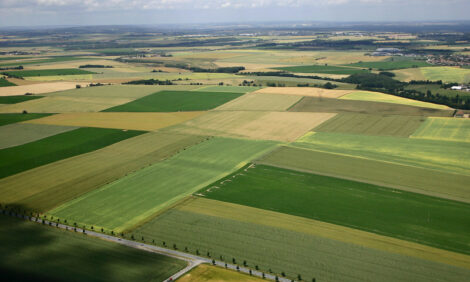



Weekly Outlook: August Crop Production Report
US - Corn and soybean prices have declined sharply since establishing contract highs in the midst of widespread crop concerns in June and early July. December 2008 corn futures reached a high just below $8.00, declined to a low just above $5.60, and are currently trading near $5.70. November 2008 soybean futures reached a high just short of $16.37, but declined to just above $13.00 in early trading on August 4.The decline in prices over the past month reflects a number of shifting fundamentals, including lower crude oil prices, declining ethanol margins, slowing corn exports, increased wheat feeding, and indications of some reduction in livestock production. The main contributor to the price decline, however, was improving crop condition ratings and the resultant larger production expectations. As of June 15, the USDA’s Crop Progress report showed only 57 percent of the U.S. corn crop in good or excellent condition. By July 27, 66 percent of the crop was rated in good or excellent condition compared to only 58 percent in those two categories on the same date last year. Improvements in the soybean crop condition ratings have been less dramatic, but good or excellent ratings increased from 56 percent as of June 15 to 62 percent as of July 27. Only 58 percent of the crop was in good or excellent condition at the end of July last year.
The crop condition ratings have been reported in the current form since 1986. From 1986 through 2007, there was a relatively high correlation between the percentage of the crop rated good or excellent at the end of the season and the U.S. average trend-adjusted yield, starting the trend calculation with 1986. Crop conditions at the end of the season have explained 88 percent of the annual variation in the U.S. average trend-adjusted corn yield and 85 percent of the annual variation in the U.S. average trend-adjusted soybean yield. If current crop condition ratings persist through the end of the season, the 2008 U.S. average corn yield would be projected at 155.7 bushels per acre and the U.S. average soybean yield would be projected at 43.7 bushels per acre. Those yields are well above the long term (1960-2007) trend yields for 2008 of 150.7 bushels for corn and 41.4 bushels for soybeans and are likely above expectations for the USDA’s August Crop Production report to be released on August 12.
More modest yield forecasts are expected due to the variability and general lateness of crop development. As of July 27, only 7 percent of the corn crop in the 18 major corn producing states was reported in the dough stage, compared to the 19 percent average in the previous five years. Only 21 percent of the soybeans were reported to be setting pods, compared to the 5-year average of 38 percent. The USDA’s National Agricultural Statistics Service (NASS) indicated in the June Acreage report that the number of fields selected for objective yield measurements and the sample size for the August Agricultural Yield Survey would be increased. Still, the lateness of the crops makes it very difficult to judge yield potential, particularly for soybeans. For both crops, weather conditions over the next two months will be extremely important for determining yield potential. A lot of yield uncertainty will persist after the August report.
The August Crop Production report will provide a more precise estimate of planted acres of corn and soybeans and an updated forecast of acreage harvested for grain. In the June Acreage report, NASS indicated that approximately 9,000 farmers would be re-interviewed in mid-July to more fully assess actual plantings and acreage intended for harvest. That information will be incorporated into the August production forecasts. Like yield forecasts, however, the acreage forecasts are subject to revision as more information becomes available later in the season.
The USDA’s August Crop Production report will provide an important benchmark for assessing 2008 corn and soybean production. Given the unusual level of uncertainty surrounding production prospects this year, the report has the potential to produce a sharp price response. Given the large price drop over the past three weeks, the greater risk may be smaller than expected production forecasts. For both corn and soybeans, revenue insurance products now provide some important downside price protection for unpriced production. November 2008 soybean futures have declined below the spring price guarantee for revenue insurance products. For corn, December 2008 futures are only about $.30 above the spring price guarantee.


